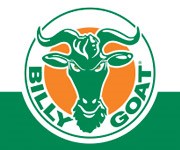Having the most efficient tools and using the most productive methods for leaf cleanup can make the job easier and faster.
Methods
Traditionally, for large areas, backpack blowers and tarps have been the mainstay tools for fall cleanup because of their relatively low cost. However, they are also labor and time intensive—barriers to completing the job quickly and efficiently. Add in the additional weight of wet leaves, and this approach becomes fatiguing, time-consuming and even challenging to the cost effectiveness of the task.
Manufacturers have tried to make the task more efficient with machinery that has higher productivity and power along with better ergonomics versus heavy backpack blowers.
For example, wheeled leaf blowers have the capability of moving a large amount of leaves and debris much more quickly than standard backpack blowers. With advanced fan technology and lightweight composite materials (i.e. composite housing vs. steel and single shot 16-blade fan), this new breed of leaf blowers has also become lighter, more durable and is capable of operating more efficiently and quieter.
In fact, some larger wheeled blowers can now do the equivalent work of multiple backpacks and even offer self-propelled options that further eliminate pushing and operator fatigue. Add in an air flow of more than 200 MPH and high CFM capabilities, these units produce the most work and can move wet or matted leaves most effectively.
For smaller areas of the campus—around buildings and some beds, or parking lots and sidewalks—outdoor vacuums are another consideration. These units make for efficient cleaning, shredding and bagging in tight areas vs. raking by hand and tarping.
A hose kit can be used for reaching leaves quickly in tight to reach areas, under shrubs or around seating areas. Vacuums with easy slide out bags and no zippers also help make loading and unloading quick and convenient.
Choosing The Right Loading Option Is Critical To Efficiency
Once leaves have been blown into place, the traditional method has been to carry full tarps to a trailer or dump truck. This typically takes more time, requires at least two workers, and results in messes. To cut down on the size of the load and to reduce costs and mishaps, debris loaders offer economies of scale.
By shredding the debris to be hauled, trailer space is maximized, allowing grounds keeping professionals to service large areas of the campus before dumping, saving on time and dump fees. Debris loaders with dual shred technology are especially effective because they offer the best debris reduction.
Loaders that can be customized to the truck provide even more efficiencies. Most loaders can be tailgate mounted with an optional hanger kit, truck hitch mounted with a swing away hitch, or skid mounted to a trailer or truck.
Hauling And Dumping Debris
A final consideration is hauling. With a dump trailer, it is easy to scoop materials out as needed. With a dump truck, it is necessary to dump materials on the ground. Trailers tend to be more convenient as they can be left on site until all materials have been loaded. Dump trucks typically offer less convenience but have larger weight load capacities.
Another option is a dump insert for pick-up trucks. Designed to fit most truck bed sizes, there are numerous options available. Inserts can be very cost-effective in the long run as they are much less expensive than a dump truck and they set-up and tear down very quickly.
Once debris has been collected, it can be loaded or unloaded with a shift of the gear that moves the dump inserts. Most dump loaders will come equipped with mesh tarp tops to keep leaves in place during transport.
“Work smarter, not harder.” While some sayings are cliché, it is true when making decisions regarding capital purchases. Since the window for fall cleanup is often short, it is important to make the most of the opportunity and in turn ensure the work gets done before the winter season is ushered in.










